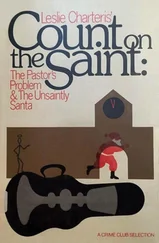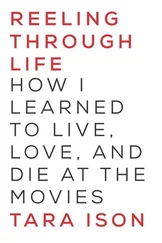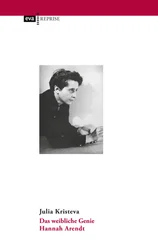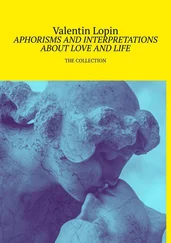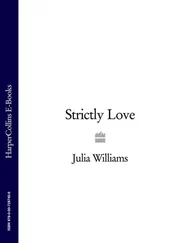Could such reticence stem from the fact that the mystical outlook seeks to “restore unlimited narcissism,” 8which Freud compares to the “oceanic feeling” ( ozeanische Gefühl ) connected to the infantile need to depend, to be protected, indeed to be archaically alienated in the mother; 9a need he was careful to guard himself from, if not to cast off altogether? And might it also reflect his justified concern to shield the nascent science of psychoanalysis from the “black tide of mud of occultism”? His watchful rationality led him to classify mysticism as a branch of “falsehood,” 10to which he spontaneously opposed “ logos and ananke , inflexible reason and necessary destiny.” He reiterated the point in 1932: “Mysticism, occultism — what is meant by these words? You must not expect me to make any attempt at embracing this ill-circumscribed region with definitions.” 11And again: “Our god λόγος may not be particularly omnipotent, not able to perform more than a fraction of what his predecessors promised,” but “what would be an illusion would be to think we might obtain elsewhere that [which science] cannot give us.” 12
Be that as it may, Freud’s reaction reveals a denial of oceanity that goes hand in hand with the denial of sensorial, preverbal dependency on the mother. And the logical consequence of this avoidance will be the return to an archaic experience of the mother — child bond conducted by Freud’s dissident successors, from Groddeck to Winnicott via Melanie Klein, the matricidal Orestian: all of them except Lacan! Against the Freudian model of an unconscious solely governed by the Law of the Father, a varyingly anti-Freudian “antimodel” appears, haunted by motherly jouissance and mystical apeiron …
In the course of his dispute with Jung (the occasion of dizzy spells and passionate swoonings when relations were severed for good), Freud wrote Jung a long letter on April 16, 1909, in which, after a long riff on numbers and death, he declared: “You will see in this another confirmation of the specifically Jewish nature of my mysticism.” 13We can read this to mean: I am not a mystic in the way you are, I have my own : my mysticism has to do with Judaism, which is “the temporal conception of life and the conquest of magic thought, the rejection of mysticism, both of which can be traced back to Moses himself.” 14Was Freud right or wrong about this? Notwithstanding his “resistance” to the “oceanic dream,” the ultimate developments of his theory of the unconscious betray some brilliant appropriations of mystical experience.

The founder of psychoanalysis, Aufklärer that he was, had nothing but contempt for the Schwärmer , the enthusiastic dreamer; but he did not reject “superstition” out of hand, as the French Enlightenment did, for he regarded mysticism as an intriguing intersection between knowledge, sense experience, and the suprasensible. He erected his own conception of psychic life as a rationalistic dualism , and his entire oeuvre opposes the “dark monsters” that abolish the difference between the spiritual and the corporeal. Freud was at once hostile to “conscientialist” rationalism, which refuses to deal with unconscious phenomena, and wary of the “elusive, intangible unconscious” of philosophers such as Eduard von Hartmann. After the turn his thinking took during the 1920s, however, the Viennese bequeathed to us an exploration of the psychic apparatus that, long after him and beyond his personal limitations, brings peerless insights to bear upon the mysteries of desire, including mystical desire. 15
Without lowering their guard against the insanity of telepathy or occultism, the New Introductory Lectures on Psychoanalysis suggest that mysticism and psychoanalysis attack the “same point”: the “deep ego’s perception of the id”; and share the same goal: to expand the domain of the ego (and of language) by giving it access to the drives of the id, so that it may “translate” them and make them conscious, free of censorship by the superego, and thus able to be shared.
Are we therefore to understand that psychoanalysis is a “metapsychology of mysticism,” linking by means of transference the “unconscious representations of things” to the “representations of words,” or deeply buried unconscious desire (the mysterious id) to the deep ego?
There is no denying the affinities between mysticism and psychoanalysis. In both experiences, a reshuffle of schemas takes place, to borrow the language of the learned Jérôme Tristan; the psychic authorities id/ego/superego change places, and their functions are transformed. But these reshuffles differ radically. Freud takes great care to avoid any confusion, and remains watchful to the end. Thus, analytical perlaboration allows that “where id was, there ego shall be,” and reinforces the ego by elucidating the logics of the desire that is peculiar to the id. In a lengthy meditation upon the goals of psychoanalysis, Freud grants with reference to mysticism that “It is easy to imagine, too, that certain mystical practices may succeed in upsetting the normal relations between the different regions of the mind, so that, for instance, perception may be able to grasp happenings in the depth of the ego and in the id which were otherwise inaccessible to it.” But he goes straight on to say: “It may safely be doubted, however, whether this road will lead us to the ultimate truths from which salvation is to be expected. Nevertheless it may be admitted that the therapeutic efforts of psycho-analysis have chosen a similar line of approach. Its intention is, indeed, to strengthen the ego, to make it more independent of the superego, to widen its field of perception and enlarge its organization, so that it can appropriate fresh portions of the id. Where id was, there ego shall be. It is a work of culture — not unlike the draining of the Zuider Zee.” 16It could not have been stated more clearly.
The mystical path, by contrast, plunges the ego into the id by a kind of sensorial autoeroticism (“obscure self-perception”) that confers a certain omnipotence upon the id, which lies “outside” the ego, and by the same token underwrites the collapse of the knowing ego, in thrall to the darkness of the realm of the id: revelation and absence, jouissance and Nothingness. The mystic, then, revels in the visual or aural representation of the Thing or Object of desire, and this unspeakable delight can turn into a perverse or psychotic impasse. The final apophthegm of 1938 runs as follows: “Mysticism is the obscure self-perception of the realm outside the ego, of the id.”
The psychoanalytic cure, for its part, addresses the same pleasurable tryst between the ego and the id, but through uttering the transference allows them both to circulate, from id to ego and from ego to id. Even so, how many analytic cures have ever facilitated the full blooming of such states of grace? On the other hand, Teresa’s “reports” to her confessors, texts written in a situation of transference with their addressees, do allow a certain perlaboration of unspeakable delight: an elucidation of the “obscure self-perception of the id,” or, as she is fond of saying, a clarification of “imagination” by “understanding”?
Freud’s genius, marking the decomposition and recomposition of psychic personality, does not spare the mystical personality. Dream, music, ocean; neither cleaving to experience nor ignoring it, analytical listening gives meaning to its jouissance .
“Sylvia Leclercq, what a dynamo.” People notice a kind of optimism about me. Does that bother you?
Читать дальше



